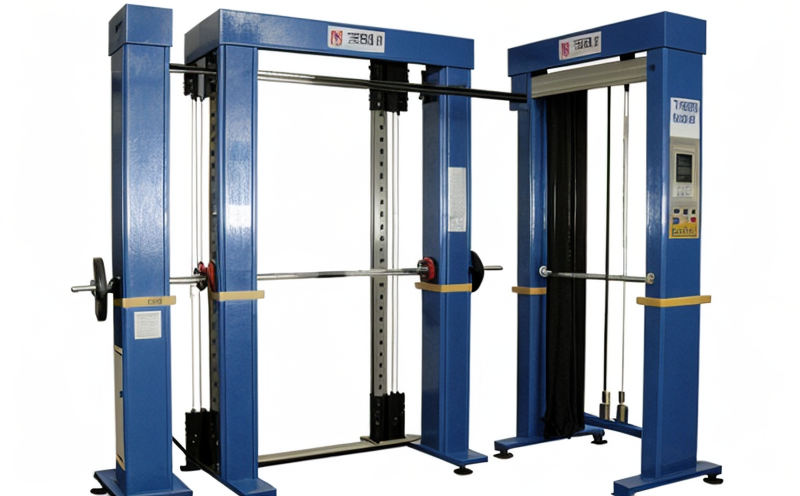DIN 53860 Determination of fabric breaking force
The DIN 53860 standard provides a method for determining the fabric breaking force, which is essential in evaluating the structural integrity and durability of textile materials. This test measures the force required to break or tear a fabric sample under defined conditions. It is widely used in various sectors such as automotive, furniture, and aerospace where high-stress environments demand robust fabrics.
The standard outlines precise procedures for specimen preparation and testing parameters to ensure accurate results. Specimens are typically cut from the fabric with specific dimensions and orientations to mimic real-world usage scenarios. The testing apparatus is designed to apply a controlled force along one or more axes until failure occurs, allowing for the calculation of breaking strength.
Understanding the breaking force is crucial for product development as it directly impacts the performance of end products. For instance, in automotive applications, higher breaking forces indicate better durability against stress and potential wear. In furniture manufacturing, this test ensures that fabrics can withstand daily use without tearing or failure, enhancing both functionality and longevity.
The DIN 53860 standard is integral to ensuring compliance with international quality standards and regulatory requirements. By adhering to these stringent testing procedures, manufacturers can confidently produce products that meet the highest levels of quality assurance.
Applied Standards
| Standard Name | Year Published | Description |
|---|---|---|
| DIN 53860:1997-04 | April 1997 | This standard provides methods for determining the fabric breaking force. It specifies the preparation of specimens, the apparatus to be used, and the procedure for conducting the test. |
| ISO 13934-1:2006 | March 2006 | This international standard covers similar aspects but is applicable to a broader range of textile materials. It complements DIN 53860 by offering additional guidance for various testing scenarios. |
| ASTM D1479-05(2017) | February 2017 | This American standard offers a method for determining the tensile strength of fabrics. While it focuses on a different type of fabric testing, it can be used in conjunction with DIN 53860 to provide comprehensive evaluations. |
| EN ISO 13934-2:2016 | November 2016 | An European standard that aligns closely with DIN 53860, this document provides a detailed guide for tensile testing of woven fabrics. It ensures harmonized testing methods across Europe. |
Quality and Reliability Assurance
The implementation of DIN 53860 is pivotal in enhancing the quality and reliability of textile products, particularly those subjected to high-stress environments. By conducting this test, manufacturers can identify potential weaknesses within their materials early in the development process. This proactive approach allows for necessary adjustments before full-scale production begins, reducing the likelihood of costly recalls or failures post-launch.
Furthermore, compliance with such standards fosters trust among consumers and regulatory bodies by demonstrating a commitment to excellence. In competitive industries like automotive and aerospace, where reputations are built on reliability and safety, adherence to these norms is non-negotiable. The results of this test can also be used in warranty claims or insurance policies, providing additional layers of protection for both manufacturers and consumers.
The meticulous nature of DIN 53860 ensures that every test conducted adheres to the highest scientific standards. This consistency across multiple batches of fabric allows companies to maintain uniform quality levels throughout their product lines. For R&D engineers and compliance officers, this standard serves as a benchmark against which all new materials and processes can be evaluated.
Customer Impact and Satisfaction
The results from DIN 53860 testing significantly impact customer satisfaction by ensuring that products meet or exceed expected performance levels. Automotive manufacturers, for example, use this test to ensure that seat covers and trimmings can withstand the rigors of daily driving without tearing or breaking. In furniture manufacturing, satisfied customers appreciate upholstered items that remain intact over extended periods.
For procurement teams, knowing the breaking force of materials is crucial when selecting suppliers. Suppliers who consistently provide fabrics meeting DIN 53860 specifications are more likely to secure long-term contracts due to their proven reliability and quality.
In summary, the test not only benefits manufacturers but also enhances customer satisfaction by delivering products that perform as expected under various conditions. This alignment between manufacturer capabilities and consumer expectations fosters a positive market reputation.





